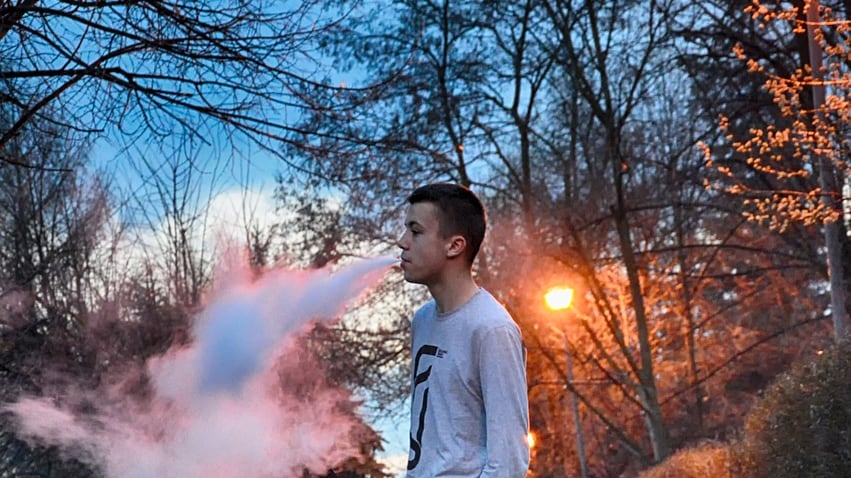The Oregon Health Authority released new data today that shows cannabis use among Oregon teenagers has remained stable since 2017, but vaping and vaping devices as the vehicle for using cannabis has dramatically increased.
The findings also show that nicotine vaping has become a popular practice among Oregon teens—in part because of the allure of its discreet appearance. Since 2017, the data shows, e-cigarette use among youth has increased by 80 percent—and one in four eleventh graders have used a vaping device.
Eleventh graders who report consuming marijuana through a vaping device has spiked since 2017 from 11 percent to 40 percent, according to the report. However, teen cannabis use has remained stable at 20 percent—showing that modes of inhalation have shifted dramatically over the past several years.
The new data complicates an already muddied landscape surrounding state restrictions on vaping, and in particular teen vaping.
Scrutiny and regulation of vaping has dramatically increased in the past month, after two Oregonians died from a respiratory illness linked to vaping cannabis.
Gov. Kate Brown's flavor ban on vaping products was suddenly halted on Oct. 17 after two lawsuits were filed the day prior by vaping companies and a tobacco retailer requesting a temporary hold on the rules, which were implemented and enforced by the OHA earlier this month.
The ban, enacted with Gov. Brown's executive powers, restricted the sale of all flavored vaping products, both marijuana and nicotine products. The temporary hold only applies to the rules addressing the nicotine products. Cannabis producers and retailers have not pursued litigation against the state.
In the wake of the rules, the cannabis and vaping industries have realized the intersection of their two products—and have largely blamed the other party for the illnesses.
Both the cannabis industry and the vaping industry claim their products are safe—and argue this by citing the history of both products being used for decades (vapes) and for centuries (marijuana) with little consequence.
In one of the two vaping lawsuits filed resisting Brown's ban, the lawsuit language shifts the blame to THC vapes claiming that the Centers for Disease Control and Prevention "principally attribute [the illnesses] to THC-based vaping products."
The vaping industry argues that vaping is a powerful option for adults who are trying to wean themselves off of traditional cigarettes. But Brown, and most state health authorities, say that the fairly new vaping phenomenon has already resulted in a new generation of teens being gripped by nicotine addiction.
Earlier this month, Gov. Brown's spokesman Charles Boyle told WW that "We know that flavored products in particular—with flavors like cotton candy, gummy bear, and bubble gum—are aimed directly at children, with the number of Oregon youth using vaping products increasing rapidly."
The newly released OHA data confirms the rising use.
Dr. Dean Sidelinger, MD, who's been the public face of the Oregon Health Authority's concern over vaping illnesses since the outbreak began almost two months ago, said in the OHA's release that the data was "alarming."
"It confirms what we've long known: Vaping is putting a new generation at risk for addiction," Sidelinger said. "These products can get young people started on using nicotine and marijuana, and it is easy to get hooked."

